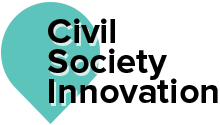BRAC’s mission is to empower people in poverty, conflict-prone, and post-disaster settings through social and economic programs. Founded in Bangladesh in 1972, BRAC has grown to become the largest NGO in the world. Over the past 50 years, BRAC has expanded across Asia and Africa to serve 138 million people. BRAC receives impact investment funding from the Omidyar Network. BRAC is 80% self-financed through its social enterprises, which include dairy and food stores and handicraft stores, and it uses a tiered pricing strategy that subsidizes services for their lowest-income clients and charges full prices for those in higher income brackets. BRAC also runs a bank and bKash, the largest mobile money platform in the world.
COVID-19 Response
Through awareness raising campaigns, BRAC has reached 46 million people in 11 countries, sensitizing the most vulnerable to the risks of COVID-19. They are distributing personal protective equipment (PPE), sanitary kits, and informational materials to help slow the spread of the virus. In Bangladesh, BRAC’s 50,000 community health workers are actively involved in informing the public about the vaccinations and directing people to vaccination services. Around 700 community health workers are also directly supporting the government to administer vaccinations. BRAC's health workers are trusted in their communities and represent a critical health infrastructure in Bangladesh, allaying fears and anxieties about the vaccinations, particularly with women in rural areas.
Theory of Change
Empowering the poorest members of society through microfinancing and self-sustaining social enterprises allows women and men living in extreme poverty to achieve greater economic participation and social justice in order to realize their full potential.
Activities
BRAC’s mission focuses on the social development of the world’s poorest people. Their programming ranges from skills development to legal aid services to community health services, with a particular focus on helping women and girls thrive. BRAC developed and pioneered the Ultra-Poor Graduation Programme which outlines a comprehensive set of interventions targeting those in extreme poverty and hard-to-reach areas. They empower these individuals and their families by transferring assets to help kickstart small businesses, providing financial skills training and greater access to healthcare services, and through regular mentoring and life-skills training. These features are offered in a sequential method to allow participants to graduate from severe destitution to a higher quality of life in a dignified and sustainable manner. Moreover, through microfinancing, BRAC serves 7.1 million clients, of which 87% are women, with loans totalling $5 billion USD in 2019 across Bangladesh. Additionally, BRAC provides training to young people and those in poverty to upskill them for the growing workforce. BRAC also addresses climate change by mapping and preemptively helping climate-vulnerable communities in Bangladesh and supporting them during flooding, erosion, landslides, and post-crisis rebuilding.
Results
BRAC is present in all 64 districts of Bangladesh, with over 7 million microfinance group members, 40,000 local primary schools, and over 70,000 health volunteers. In 2019 alone, BRAC gave over 3 million people access to learning opportunities, gave 112,000 people in hard-to-reach communities access to healthcare, and lifted about 110,000 households out of poverty in Bangladesh. BRAC’s integrated development programs have served 70% of their target population and helped 96% of program participants graduate out of ultra-poverty. They have helped 350,000 people access skills development, of which more than half were women. As well, BRAC has placed a specific focus on women’s civic engagement empowerment and helped 1.2 million people access social safety net services and have had over 9,000 members involved in their women-led grassroots organizations. Moreover, around the world in 2020, they reached over 2.5 million people through their health initiatives in Afghanistan, Nepal, Uganda, Liberia, and Sierra Leone. They also provided microfinance loans to over 600,000 borrowers in Myanmar, Liberia, Uganda, Tanzania, Sierra Leone, and Rwanda.
